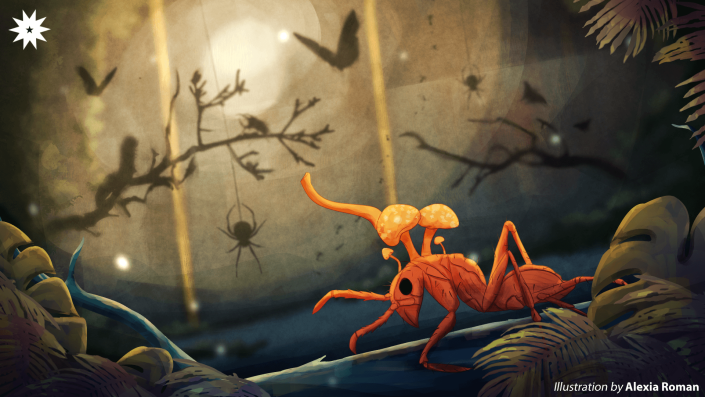When HBO’s hit series The Last of Us released its season finale in March, a question had loomed in viewers’ minds: can fungi really turn humans into zombies? Ophiocordyceps unilateralis, the real-life fungus species mentioned in the show, is linked to parasitic infections in insects which often lead to zombie-like effects in infected invertebrates. Though the thought of zombified insects may keep some people awake at night, cordyceps are not actually as harmful to humans and may even provide some health benefits.

Killer fungi
Cordyceps is a fungal genus commonly found in tropical areas worldwide. While some types, like the O. unilateralis genus, can infect and kill insects, each species can effect living creatures differently. Bryn Dentinger, curator of mycology at the National History Museum of Utah, explains how O. unilateralis cause zombie-like effects in insects, “It’s well known for causing behavioral changes in the ants, where it modifies the host’s behavior so that it will seek humid height for the fungi. [This] is called summit disease.”
Unsuspecting ants may be infected with cordyceps long before they notice, initially getting their muscle fibers attacked for a week until better conditions for infection are met. Once an infected insect reaches humid environments that are optimal for further infection, such as leaves or branches, cordyceps then force an insect to clamp down on these surfaces and dissolve the muscle fibers present in its mandibles so it can no longer unclamp itself—leaving the infected with no escape.
Cordyceps grow rapidly through an insect’s body, consuming all of its internal organs until it is rendered lifeless. The fungi then erupt outside the infected body, producing a sporocarp that can later infect other insects.
Apocalyptic impulses
Though cordyceps infections are prevalent among various insects, scientists have yet to discover if cordyceps can hijack the brain of a host. “There are some small molecules that have been identified that are suspected to be involved in interacting with the brain in some way. But that still remains to be elucidated entirely,” Dentinger posits.
However, a recent study exposes how cordyceps can turn infected insects into mindless puppets by targeting their muscle fibers without disabling their nervous system. Once the fungus has penetrated through the membrane covering an insect’s muscle fibers, the infected are also more prone to any toxins emitted by the fungus. These toxins can lead to muscle spasms, which can then lock an insect’s jaws in place.
Threat turned therapy
While the parasitic effects of cordyceps are commonly observed in ants, moths, and other invertebrate animals, there remain no recorded instances of the fungi attacking a vertebrate host. Dentinger explains that their host-specificity only enables specialized interactions with insects, preventing them from latching on to completely different organisms, such as humans. As their exact attack mechanisms are still unknown, the possibility of a human invasion is still beyond scientific understanding.
Although it appears unlikely that cordyceps will become an apocalyptic threat any time soon, they might become the talk of the town in a field more advantageous to humans: medicine. The pharmaceutical potency of cyclosporine, a bioactive compound present in cordyceps, has proven to be a promising form of immunosuppressive therapy by preventing organ rejection after organ transplants. “Prior to the discovery of this drug, the immune system would attack these foreign organs, but now, with cyclosporine, we can suppress the immune system which then allows the organs to become integrated into the body. That’s been a major innovation in modern medicine,” Dentinger adds.
Fungal treasure troves
With a wide array of phytochemicals and bioactive properties linked to them, fungi such as cordyceps might be more beneficial to humans than we think. Dentinger states that due to the unusual chemical repertoires they possess in order to manipulate the physiology of living hosts, fungi could very well be the key to accessing new sources of medicine and procuring natural compounds to advance drug discovery and development.
Whether they will become the next big thing in modern medicine or the inspiration of future sci-fi shows, one thing about cordyceps is for sure—you have not seen the last of them.
